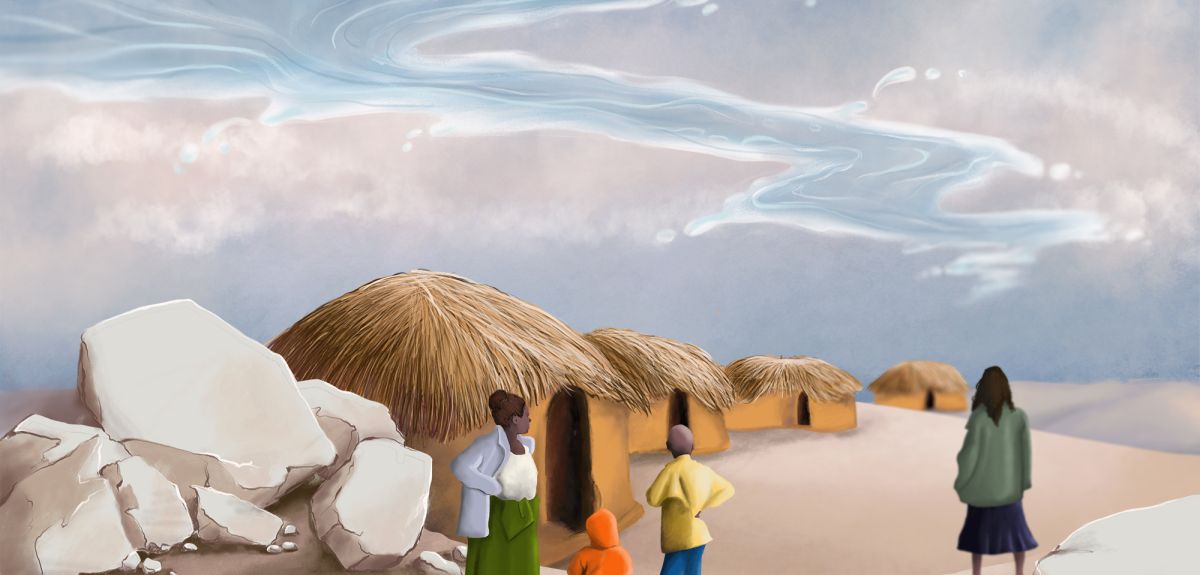
‘Rivers in the sky’ shape African climate - research
Deep valleys contain airborne ‘rivers in the sky’ and help to create arid conditions in East Africa, according to new research from the University of Oxford and the UK's Met Office. Published in Nature, the study uncovers how east-west river valleys direct millions of tonnes of water vapour from the Indian Ocean away from East Africa and towards the Congo rainforest, and, in doing so, limit East African rainfall.
East Africa is much drier than other tropical land regions, including the Amazon and Congo rainforests. The geography of East Africa was always thought to make the region dry and susceptible to drought, but the precise mechanism has been elusive until now. This research demonstrates the east to west river valleys are a crucial factor in the low annual rainfall.
Dr Callum Munday, from the REACH programme at Oxford’s Smith School, who led the study, explains, ‘Normally, when we think of valleys and water, we think of the rivers that flow along the ground. In East Africa, deep valleys, such as the Turkana Valley, channel strong winds and create invisible rivers in the sky. These invisible rivers carry millions of tonnes of water vapour, the key ingredient for rainfall.’
Normally, when we think of valleys and water, we think of the rivers that flow along the ground. In East Africa, deep valleys, such as the Turkana Valley, channel strong winds and create invisible rivers in the sky
Dr Callum Munday
The team, which had previously travelled to Kenya to measure the ‘invisible rivers’ with weather balloons, wanted to see how the valleys affect climate across the whole of Africa. To do this, they devised a series of model experiments which changed the geography of the rift system by progressively filling in the river channels.
Co-author Professor Richard Washington explains, ‘The experiments show the valleys affect climate on a continental scale. It can’t rain equally everywhere, and the valleys help to sustain high rainfall in the Congo basin, while leaving East Africa prone to drought.’
Understanding the climate trade-offs in rainfall between different regions at a continental scale can help us improve our ability to predict future rainfall patterns across Africa, say the authors. This is especially important given the policy implications of changing climate across Africa. The Congo basin is also a key biodiversity hotspot and carbon store.
The experiments show the valleys affect climate on a continental scale...the valleys help to sustain high rainfall in the Congo basin, while leaving East Africa prone to drought
Professor Richard Washington
The Horn of Africa to the east of the valleys is currently experiencing its longest and most severe drought on record. While the valleys do not affect year-to-year variability in rainfall, Professor Washington notes ‘by creating a setting where the rainfall is so unusually low to start with, the valleys make East Africa much more drought prone’.
On longer time-scales, the experiments may help to explain environmental pressures facing our earliest hominin ancestors millions of years ago.
According to Dr Munday, ‘The drying and expansion of savannah-type ecosystems over millions of years is considered a crucial factor in the evolution of early hominin species, leading to adaptations such as bipedalism (walking on two feet). The model experiments show the formation of valleys and associated drying is a plausible mechanism which could have led to this savannah expansion.’
The research is part of the REACH programme at the Smith School of Enterprise and the Environment, University of Oxford and is funded by the Foreign, Commonwealth and Development Office (FCDO). It is also supported by the Met Office Academic partnership (MOAP).
See the study here https://www.nature.com/articles/s41586-022-05662-5
 Oxford launches first human aerosol TB challenge trial
Oxford launches first human aerosol TB challenge trial
 Rees Centre report reveals challenges faced by Black and Asian kinship carers
Rees Centre report reveals challenges faced by Black and Asian kinship carers
 Expert Comment: The Modern Slavery Act at 10 – what have we learnt for human rights?
Expert Comment: The Modern Slavery Act at 10 – what have we learnt for human rights?